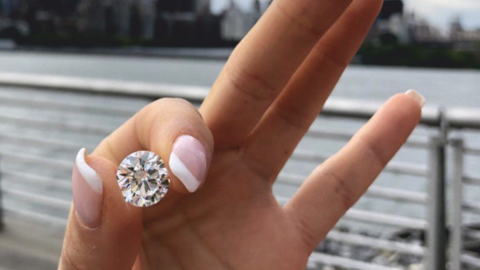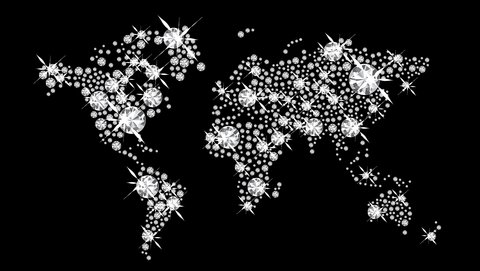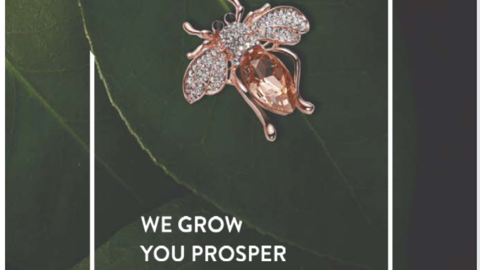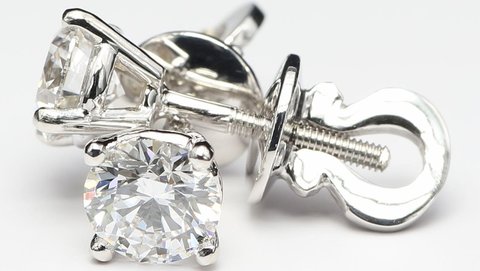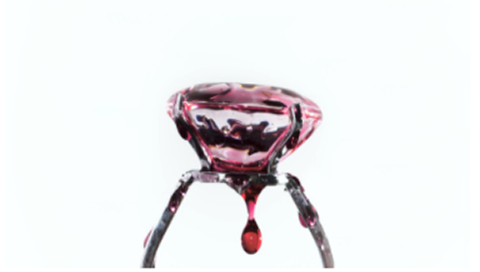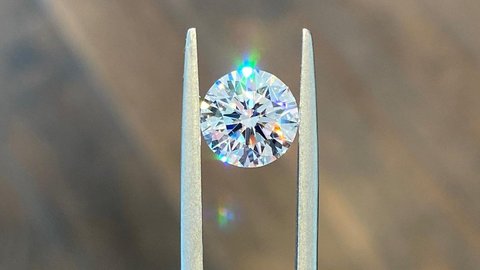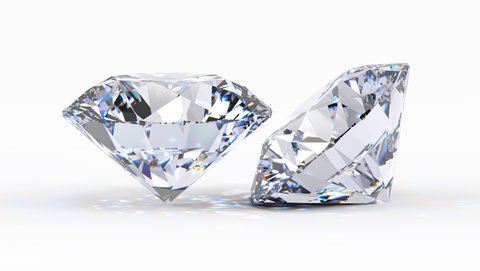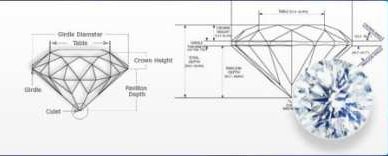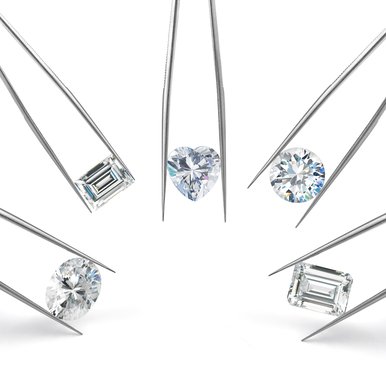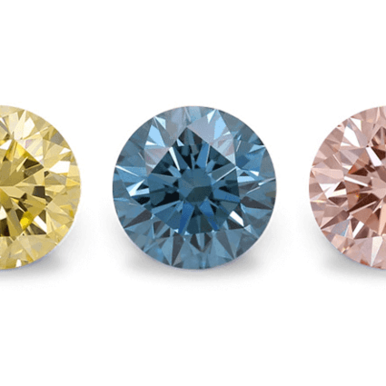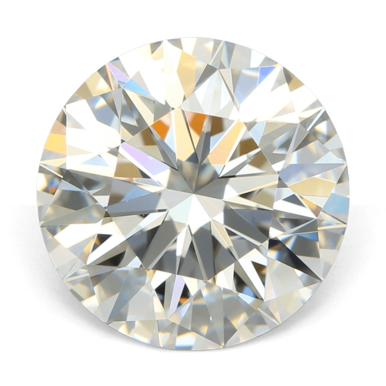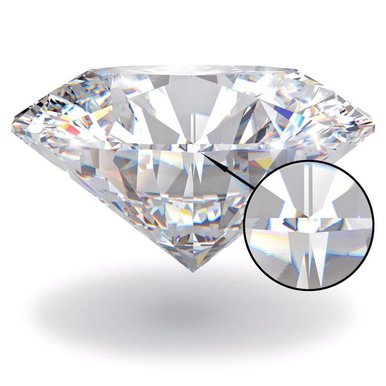Cushion Cut Diamond Buying Guide
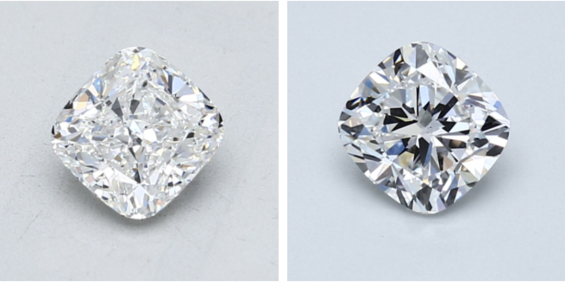
Shape
Cushion cut is a unique union between modern Round Brilliant cut and one of the most classic Old Mine Cut. The cut resembles the cushion with its squared shape and cut corners. Cushion diamonds display high amount of fire and brilliance, however the price tag is usually relatively low in comparison to most other cuts. This makes cushion very attractive for customers who don't want to pay extra, but still want the gemstone capable of presenting gorgeous light performance. Cushion diamonds have a relatively big table, which makes different inclusions and color imperfections more visible. That’s why jewelers came up with a modification for the classic cushion cut, which hides most of the flaws behind the 'Crushed Ice' look.
Cut
What makes this shape unique in some sense is the absence of an absolute standard faceting pattern that the cutters have to follow. There is a bit more variety that leads to many different ways for the diamond to be cut. However, among those variations, there are two major patterns that can be differentiated: Standard (Brilliant) Cushion Cut and Modified Cushion Cut. Brilliant Cut has a more classic look with full of fire and light play. Modified Cut posesses what is called 'Crushed Ice' look by gaining extra facets.
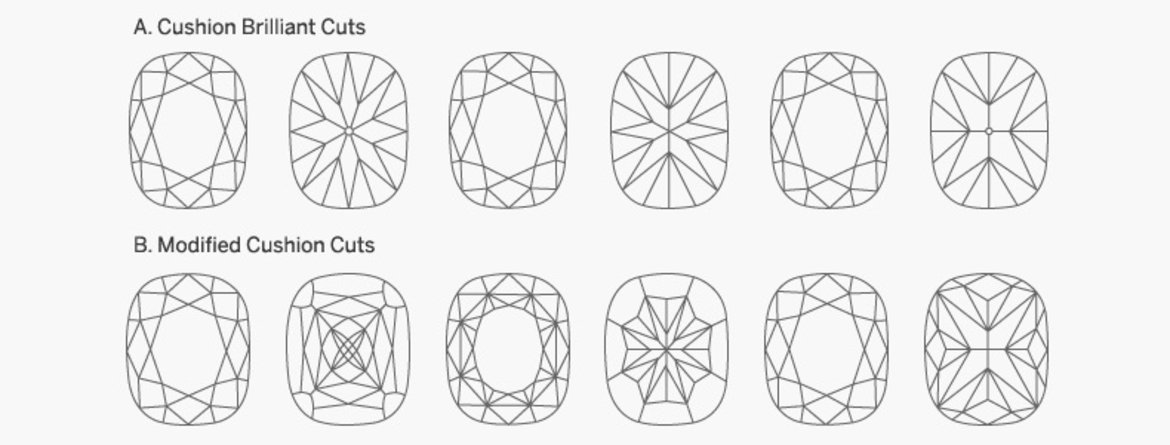
Different variations for a cushion cut sometimes can lead to confusion among both jewelers and clients. the difference in number of facets and the way the diamond is cut adds to the different length to width ratios. It's important to understand what kind of a cut the cushion is and what are the proportions of the diamond. However, it is the overall appearance that really matters. With that said, both the table and the depth should be less than 70%. Otherwise, the diamond won't be capable of even a slightest light performance.
Cushion Cut Diamond Table
| Excellent | Very Good | Good | Fair | Poor | |
| Table % | 61 - 67 | 58 - 60 or 68 - 70 | 56 - 57 or 71 | 54 - 55 or 72 - 73 | < 54 or > 73 |
| Depth % | 61 - 67 | 58 - 60.9 or 67.1 - 70 | 56 - 57.9 or 70.1 - 71 | 54 - 55.9 or 71.1 - 73 | < 54 or > 73 |
| Girdle | Very Thin to Slightly Thick | Very Thin to Thick | Very Thin to Very Thick | Extremely Thin to Extremely Thick | |
| Culet | None | Very Small | Small | Medium | > Medium |
The ideal table percentage for a cushion cut diamond falls between 61% and 67%, ensuring optimal light reflection and a balanced appearance.
The girdle thickness of a cushion cut diamond should ideally fall between very thin and slightly thick, ensuring durability without compromising the stone's appearance. A well-proportioned girdle strikes a balance between strength and aesthetics, while excessively thin or thick girdles may affect the diamond's integrity or visual appeal.
When selecting a cushion cut diamond, it is essential to consider these proportions and ratios in conjunction with the diamond's carat weight, color, and clarity. A well-cut cushion diamond with ideal proportions will showcase the cut's romantic charm and exceptional fire, making it a stunning choice for engagement rings and other fine jewelry pieces.
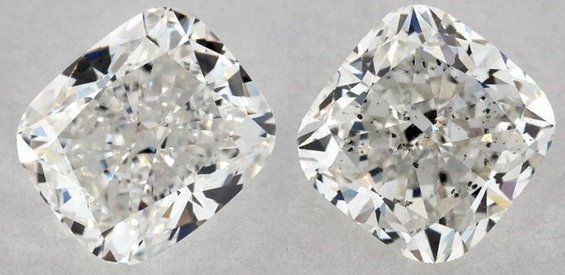
Clarity
Clarity of cushions is graded the same way as all other diamonds: from IF to I3. However, the big size of the table makes the inclusions way more visible in a Cushion Brilliant cut, especially when they are dark and located underneath the table. In Modified Cushion cuts, a lot of the impurities are hiden within the "Crushed Ice". The only way to notice some of them is magnification and looking at certain angles. Upon purchase, the clarity of Standard Cut should be inspected more precisely. But even with Modified Cut, making sure that the diamond is eye clean is recommended.
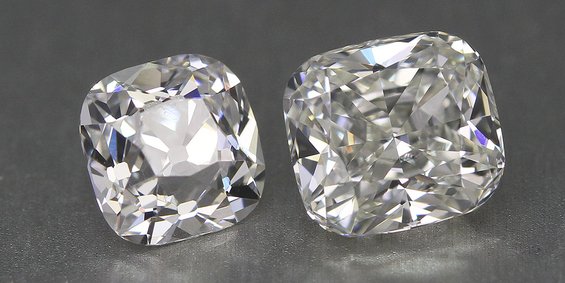
Color
One of the main features of cushion cut diamonds is that they retain color better than some other shapes, especially Modified version. This means that an I-graded cushion would look a lot more yellow than an I-graded round, since the cushion has more facets and reflects its yellow tints with more intensity. This is why choosing a cushion with color lower than F is not recommended. Of course, it always depends on the settings of the piece of jewelry and, in some situations, a more yellowish cushion would fit well. However, the colorless group is a general way to go with a cushion diamond.


